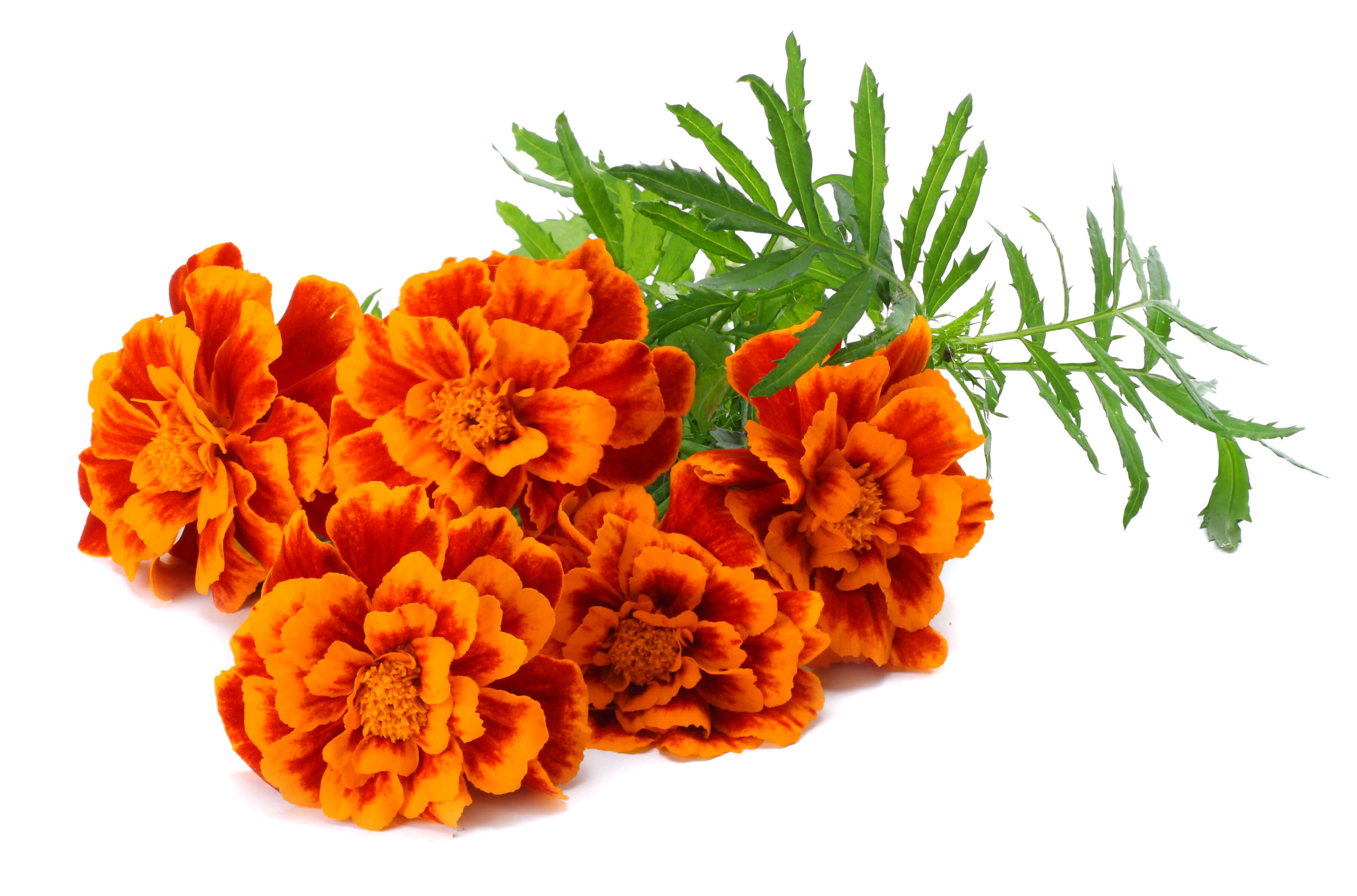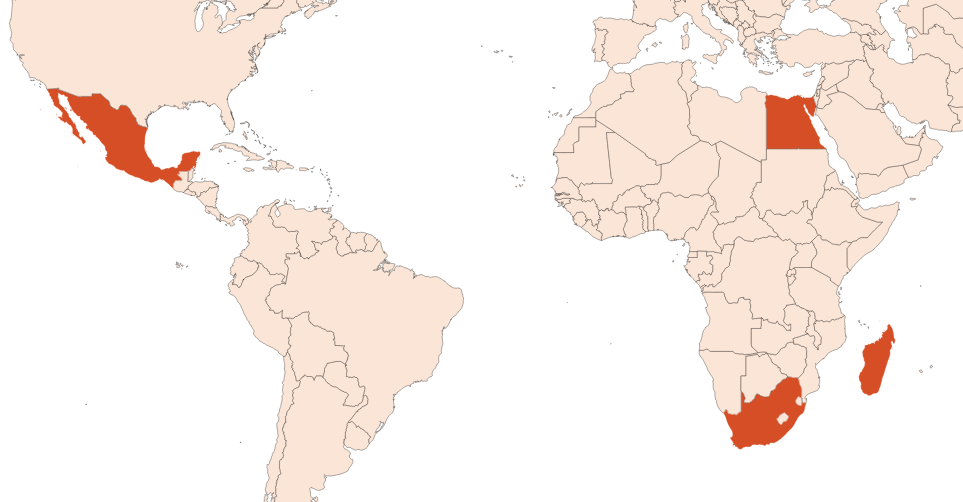Tagetes EO
Naturelle
Fruity > Yellow Fruits > Grassy > Boozy

Crédits photo: ScenTree SAS
Latin name :
Tagetes glandulifera
Botanical profile :
Tagetes is a flowering herb of the Asteraceae family (like Immortelle Absolute, Tarragon EO and Blue Chamomile EO), and of the genus Tagetes.
Geographic origin :
The Tagetes used in perfumery comes from diverse origins: most often from South Africa, it can also be found in Egypt, Nepal or Madagascar. Tagetes nevertheless finds its origin in Central America (Mexico).
Chemotypes :
The genus Tagetes contains about 30 species. Otherwise known as marigolds, the most cultivated tagetes are the following: Tagetes patula (Mexico, Guatemala), Tagetes argentina (Argentina), Tagetes bipinata, Tagetes minuta (widespread, with small white flowers), Tagetes filifolia (Mexico, Argentina), Tagetes tenuifolia (Mexico), Tagetes balsamita.
Finally, there is the erect tagetes (Tagetes erecta), harvested in Madagascar, at high altitude, and also used in perfumery.
Finally, there is the erect tagetes (Tagetes erecta), harvested in Madagascar, at high altitude, and also used in perfumery.
Extraction process :
Tagetes grow rapidly in warm climates and at high altitudes. It can grow up to two metres in height. Usually, it is cultivated in fields at high altitudes in the countries where it is grown.
Their harvest is made from April to June, during the flowering of the plant, or a little after, because the flowers contain the essential oil of the plant. Harvesting is done manually, and requires to protect ones arms, because the stems of the plant secrete photosensitizing molecules. With a scythe, growers are cutting the flowers, avoiding cutting the leaves and too much of the stem.
Once harvesting is done, the flowers are distilled without waiting too long, to prevent them from drying out. They are extracted by steam distillation. This means that pressurised water vapour passes through the flowers to carry away their scent principle. At the top of the distillation column, the steam is refrigerated to separate the water from the essential oil in a Florentine vase by decanting.
Tagetes essential oil can be used to isolate the molecules called Tagetone or Dihydrotagetone, which are naturally present in the flower's olfactive principle.
Their harvest is made from April to June, during the flowering of the plant, or a little after, because the flowers contain the essential oil of the plant. Harvesting is done manually, and requires to protect ones arms, because the stems of the plant secrete photosensitizing molecules. With a scythe, growers are cutting the flowers, avoiding cutting the leaves and too much of the stem.
Once harvesting is done, the flowers are distilled without waiting too long, to prevent them from drying out. They are extracted by steam distillation. This means that pressurised water vapour passes through the flowers to carry away their scent principle. At the top of the distillation column, the steam is refrigerated to separate the water from the essential oil in a Florentine vase by decanting.
Tagetes essential oil can be used to isolate the molecules called Tagetone or Dihydrotagetone, which are naturally present in the flower's olfactive principle.
Major Components :
Tagetone (40-50%)
Cis and Trans-Beta-Ocimene (30-40%)
Dihydrotagetones (≈13%)
Cis et Trans-Ocimenone (≈9%)
D-Limonene (≈3%)
Cis and Trans-Beta-Ocimene (30-40%)
Dihydrotagetones (≈13%)
Cis et Trans-Ocimenone (≈9%)
D-Limonene (≈3%)
- Uses in perfumery :
- Tagetes brings a hint of green and honeyed hay, and a comfortable effect. It is used in the honey note of a rose for example.
- Other comments :
- The introduction of tagetes took place in South Africa in the context of the Boer War between the British and the Afrikaners in 1900.
- Volatility :
- Heart
- Appearance :
- Yellow to orange liquid
- Stability :
- Terpenes found in this oil may polymerize under a strong oxydation.
- Price Range :
- €€€€
- Aromatherapy :
Informations provided below are taken from reference works in aromatherapy. They are given for information purposes only and can not constitute medical information, nor engage the responsibility of ScenTree.
Tagetes is known to be vermifuge (expels intestinal worms) and is recommended in case of respiratory catarrhal infection.

Crédits photo: ScenTree SAS
- EINECS number :
- 294-862-7
- FEMA number :
- 3040
- Allergens :
- Limonene-D - Linalool - Eugenol
- IFRA :
- This ingredient is restricted by IFRA
- Restriction type :
- PROHIBITION_RESTRICTION_SPECIFICATION
- Cause of restriction :
- PHOTOTOXICITY
- Amendment :
- 49
- Comments :
- Tagetes erecta should not be used as a fragrance ingredient in any finished product application. Only Tagetes patula and Tagetes minuta should be used as fragrance ingredients according to the Restriction and Specification set in this Standard. The Standard is set due to the phototoxic effects of Tagetes oil and absolute. For more detailed information on the application of this Standard, please refer to the note on phototoxic ingredients in chapter 1 of the Guidance for the use of IFRA Standards. The restriction only applies to Tagetes patula and Tagetes minuta. The content of alpha-Terthienyl (Terthiophene, CAS number 1081-34-1) in Tagetes patula and Tagetes minuta oils and absolutes must not exceed 0.35 %.
- Quantitative limit on the use :
-
Cat.1 Cat.2 Cat.3 Cat.4 Cat.5A Cat.5B Cat.5C Cat.5D Cat.6 0,01 % 0,01 % 0,01 % 0,01 % 0,01 % 0,01 % 0,01 % 0,01 % 0,01 % Cat.7A Cat.7B Cat.8 Cat.9 Cat.10A Cat.10B Cat.11A Cat.11B Cat.12 0,1 % 0,01 % 0,01 % 0,1 % 0,1 % 0,01 % No Restriction 0.010 % No Restriction - Annexe I :
- Some regulated synthetic ingredients are found in nature and in certain proportions in natural ingredients. This presence in nature has to be taken into account when calculating limits of use recommended by the IFRA. In case you do not know these concentrations, you can use the ones estimated by the IFRA. Here they are :
- Restriction type :
- RESTRICTION NON QRA
- Cause of restriction :
- PHOTOTOXICITY
- Amendment :
- 48
- Comments :
- The limit only applies to applications on skin exposed to sunshine, excluding rinse-off products (please refer to Table 4 of the QRA booklet for more detailed information).
- Annexe I :
- Some regulated synthetic ingredients are found in nature and in certain proportions in natural ingredients. This presence in nature has to be taken into account when calculating limits of use recommended by the IFRA. In case you do not know these concentrations, you can use the ones estimated by the IFRA. Here they are :
| List of regulated compounds contained in this ingredient | ||
|---|---|---|
| Regulated ingredient name | CAS N° | Estimated Concentration |
| beta-Thujone | 471-15-8 | 0,5 |
| Skin contact products | Non skin contact products | |
|---|---|---|
| Leave on products | Rinse off products | |
| 0,01 % | X | X |
| List of regulated compounds contained in this ingredient | ||
|---|---|---|
| Regulated ingredient name | CAS N° | Estimated Concentration |
| beta-Thujone | 471-15-8 | 0,5 |
To learn more about IFRA's standards : https://ifrafragrance.org/safe-use/library
ScenTree is solely responsible for the information provided here.


